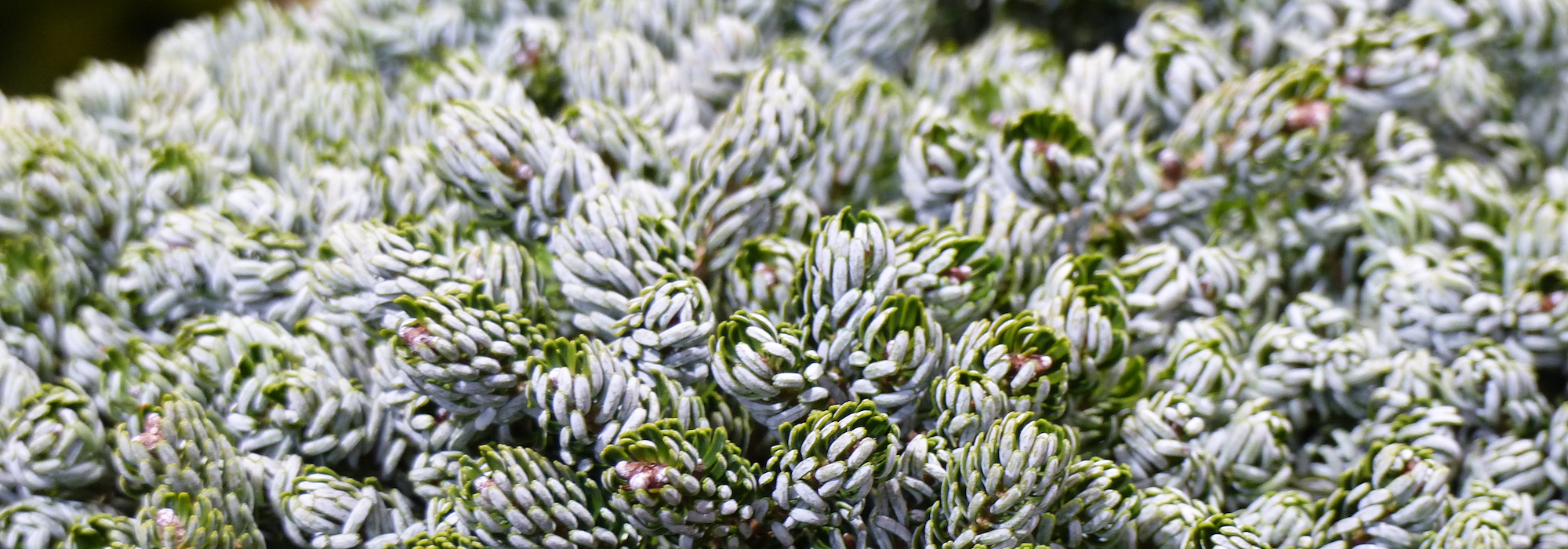
10 rare and unusual conifers for an atypical garden
Our selection and advice
Contents
In the large family of conifers, there are rare and unusual varieties, far too rarely offered for sale. Undemanding and with strong character, they become a focal point in your garden whatever its style. Discover our selection of 10 rare and unusual conifers. For each selected species, you will find targeted advice to successfully cultivate these true little wonders of nature.
Japanese umbrella pine, needles arranged in bouquet-shaped clusters
In the family Sciadopityaceae, Japanese Umbrella Pine (Sciadopitys verticillata) is the only surviving member through centuries and millennia. This very ancient species remains fairly rare in natural medium, but is often grown in gardens because it displays a unique habit.
The Japanese Umbrella Pine is recognised by its long evergreen needles of very pale green. These are arranged around a twig to form a rosette. While it can reach around 30 metres in height in its native Japan, this remarkable conifer typically attains 15 metres in Europe with a spread of 6 metres.
Preferring maritime climate, this hardy tree thrives when planted in soil that does not dry out, is rich and humus-bearing, and is sufficiently deep. It tolerates a sunny or part-shaded position. As it grows very slowly, it can be grown in a large pot for several years – this helps ensure it remains sheltered from wind in all circumstances.
Pair it with other conifers that enjoy the same growing conditions, a few mounds of Viburnum davidii, tussocks of Stipa arundinacea, Sedums and Heucheras.
Wollemi Pine, a rarity worth discovering
Because it is as beautiful as it is rare, the Wollemi Pine is a protected tree. In their natural medium, few Wollemia nobilis pines manage to withstand the vagaries of the weather. For a long time they were thought to have completely disappeared… but a few specimens were rediscovered in Australia in the mid-1990s.
This botanical curiosity is recognisable by its strange, swollen chocolate-coloured bark and by its tender green evergreen needles, narrow, flexible and long on the lower branches, which resemble fern fronds. Leaves are shorter, flat and become stiffer towards the crown. It is also notable for its ability to regenerate from its stump and to form several trunks.
When it is happy, its growth is fairly rapid: it can reach 35 metres in height and 5 metres in width at ripeness, with an upright, pyramidal habit. Ideally, plant it in a gritty, organic-rich soil, deep, acidic, remaining cool to moist, especially in summer. It is important to know that while this species can tolerate down to -12°C, young specimens suffer once temperatures fall below -5°C. It prefers mild, humid climates. Plant it in a very sunny, warm spot, sheltered from cold winds. Finally, although not essential, this pretty conifer tolerates pruning well and can be grown in a pot.
Surround it, for example, with arborescent ferns and Phyllitis scolopendrium and horsetails for an exotic feel, or with clipped balls of shrubby Veronicas and Pittosporums.
Discover other Rare and unusual Conifers
View all →Available in 1 sizes
Available in 2 sizes
Available in 1 sizes
Available in 1 sizes
Available in 1 sizes
Available in 2 sizes
Available in 2 sizes
Available in 2 sizes
Available in 3 sizes
Available in 1 sizes
Weeping giant sequoia, an atypical and unique presence
With its pretty gnarled trailing branches, the Weeping Giant Sequoia is one of those trees that cannot be compared to any other! During its first years, this species is characterised by an upright habit. But over time, the branches curve to display unique silhouettes, a charisma not seen in other conifers.
Its branches bear evergreen foliage of rare elegance, resembling draperies of bluish-green. It is composed of fine, triangular needles. The bark, as with other Sequoiadendron, is remarkable, tinged with reddish-brown and becoming artistically fissured with age.
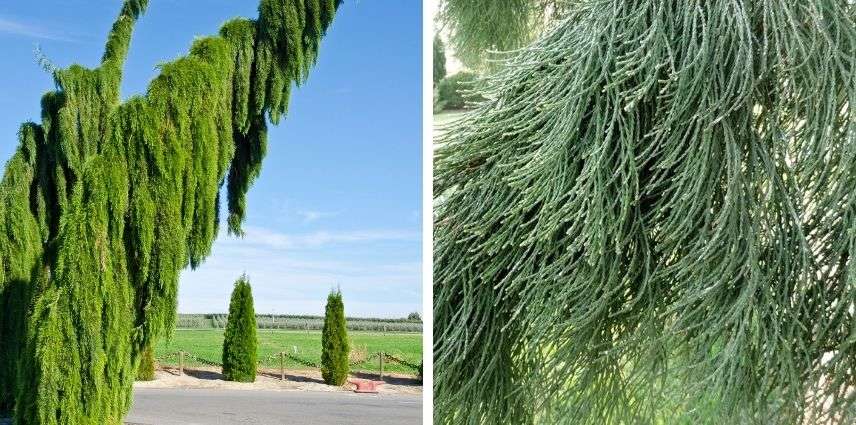
Sequoiadendron giganteum ‘Pendulum’
At maturity, this tree typically reaches around ten metres in height with a spread of 5 metres. Its weeping aspect only reveals itself after some years, so patience is required to admire it! To give it the best chance to develop its full potential, the Weeping Giant Sequoia should be planted in deep, light, well-drained soil. A slightly acidic soil is entirely acceptable, although soil as close to neutral as possible is recommended. Hardy, this conifer tolerates down to -15°C but does not appreciate soils that are too waterlogged in winter.
To perfect your garden display, you can pair this atypical conifer with cushions of Pennisetum or blue fescues, as well as a few clipped balls of Sacred Bamboo, box or variegated euonymus.
Metasequoia 'Gold Rush' and its magnificent golden hue
Metasequoia ‘Gold Rush’ is a deciduous conifer, meaning it will lose its leaves in autumn. In spring, it reveals long, flattened, supple leaves. They are then golden and luminous, then the colour shifts slightly towards green in summer before turning golden again and taking on a rusty hue in autumn.
Its slow growth and slender silhouette, with a smaller footprint than the type species, make it a suitable candidate for a medium-sized garden.
Give it a sunny, well-exposed position. Metasequoia ‘Gold Rush’ prefers fresh to moist, deep soils that are slightly acidic or neutral. Prefer sandy or loamy soils, not too calcareous. Finally, it tolerates clay soils.
It will be absolutely stunning when paired with a tapetum of Geranium sanguineum, some ‘Eva Gold’ heathers and Leucothoe axillaris ‘Twisting Red’.
Korean fir 'Kohout's Icebreaker': a study in contrasts
Dwarf conifers are naturally among the most distinctive and popular, their versatility suiting a variety of situations. Discover the pretty dwarf Korean fir (Abies koreana ‘Kohout’s Icebreaker®’), a luminous species that takes on beautiful colours through the seasons. Indeed, the young recurved needles that push through in spring are white and sparkling, while green appears over the following weeks, giving a variegated appearance. Then the needles straighten and the conifer eventually adopts a slightly bluish tint. With a rounded habit (60 cm in all directions) for the first 10 years, it later shoots up to form a broad cone 2 metres high by 1 metre wide.
This small dense conifer is perfect for brightening and enlivening a rockery or small garden, thanks to a spread that rarely exceeds one metre. Plant in non-scorching sun or partial shade. It prefers perfectly drained, humus-rich soil. It is important to know that Kohout’s Icebreaker Korean fir dislikes heat: during a heatwave, do not forget to water it.
At the foot of a dwarf Korean fir, you can plant rock carnations, small irises and cypress spurge, perennial plants that pair wonderfully with this small conifer.
Chamaecyparis 'Boulevard', a lush beauty
Very dense, Chamaecyparis pisifera ‘Boulevard’ is a handsome conifer bearing attractive evergreen, feathery and variegated foliage, with colour ranging from green to blue and silvery highlights that catch the light. Its foliage can take on a purplish-violet tinge in winter when exposed to cold.
Hardy and well suited to small gardens, it develops a narrow, conical and irregular habit and seldom exceeds 1 metre in height, even after 10 years’ growth. It will therefore take many years to reach 3 metres tall by 1.5 metres wide.
Plant in a sunny or partially shaded spot. Although it can be grown in a cool, moist climate, this tree is also excellent in a pot on a terrace, in a rockery or in the ground in a garden. Prefer fertile, cool soils that are above all well drained, light and neutral to slightly acidic.
It pairs beautifully with other conifers in golden tones, with heathers or in an autumnal scene alongside Hamamelis mollis ‘Pallida’ and Hydrangea quercifolia.
Korean fir 'Silberlocke', sure to turn heads
This variety of Korean fir, Abies koreana ‘Silberlocke’, astonishes with its particularly luminous colour. Indeed, it is adorned with short evergreen needles, curved, green with a silvery underside that catches the light and the eye. Another asset: it develops a pyramidal habit, with tiered branches for a striking effect.
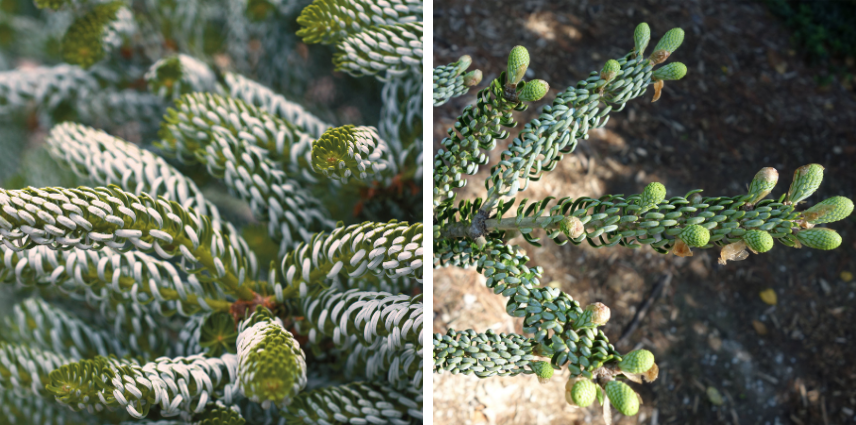
After about six years’ growth, this handsome bush reaches 2 metres in height – and does not exceed 4 metres at ripeness.
For planting, choose well-drained soil, ideally stony or rocky, and not too dry. Ensure the bush is planted in non-scorching sun, otherwise in partial shade, as it does not tolerate heat and direct sun well.
Perfect for ornamenting a rock garden, this fir can also enhance a small garden and make a strong statement, thanks to its very charismatic habit. The aesthetic forms achieved with this variety make it a perfect alternative for unconventional green spaces, in a decidedly modern style. You can pair it with pretty perennial plants such as cypress spurge, carpeting the soil with magnificent colours through the seasons. Or with stipas and St John’s wort.
Cryptomeria japonica 'Sekkan Sugi', a characteristic brightness
With its pretty pale green colour turning almost white in winter and its unusual habit, Cryptomeria japonica ‘Sekkan Sugi’ has every reason to appeal to lovers of rare conifers. It produces young shoots and an evergreen, soft, feathery foliage, pale green turning creamy in winter. It forms a small bushy tree 6 to 7 metres high by 3 to 4 metres wide, but only after many years.
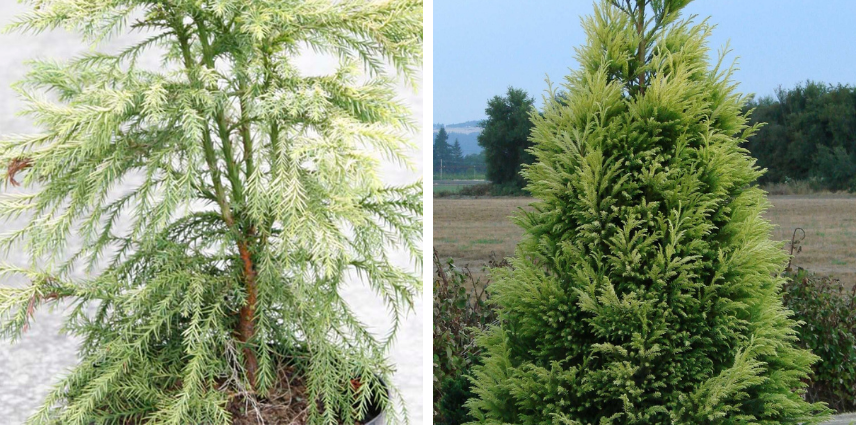
Cryptomeria japonica ‘Sekkan Sugi’ (photo on the right: Mark Bolin – Flickr)
Plant this Japanese cedar in partial shade, especially in regions where the sun can be particularly scorching. It prefers a good garden soil, not too calcareous, rather moist and fertile. However, it dislikes overly dry or shallow soils.
To play with heights, this tree can be planted beside a pretty creeping juniper or clumps of fescues.
Podocarpus macrophyllus, delightfully exotic
Podocarpus macrophyllus offers long, thin, flat evergreen leaves of a particularly attractive glossy green. They are arranged along almost horizontal shoots. It is prized for graphic habit and exotic appearance. Moderately hardy (down to -10°C), it particularly enjoys Brittany’s warm, humid climate.
With slow growth, you can easily grow Podocarpus macrophyllus in a pot on the terrace (bring indoors to protect from frost in winter) or even in a cool room in the house, taking care to mist its foliage. Place it in partial shade, in a cool setting, away from scorching temperatures. It thrives in fertile, well-drained soil, neutral to slightly acidic.
To play with colours and enhance garden’s exotic feel, Podocarpus macrophyllus pairs nicely with Japanese azalea and black Ophiopogons.
Ginkgo biloba ‘Menhir’, a palette of colours season after season
Closely related botanically to conifers, the Ginkgo biloba ‘Menhir’ is a rare tree. It is distinguished by its deciduous, fan-shaped leaves, more deeply divided than the type species, with a beautiful bluish-green colour before turning gold in autumn. Note that this variety bears no fruit! It naturally forms a tree with a narrow, conical habit. Over the years it will take many years to reach 15 metres in height and 2 m in width.
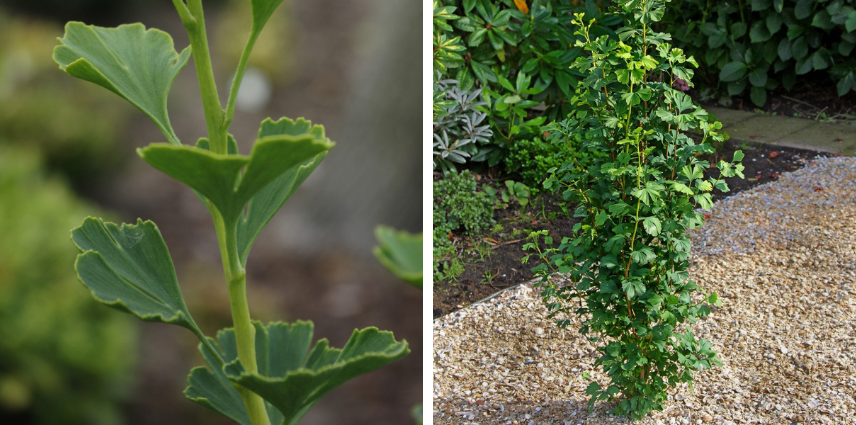
Ginkgo biloba ‘Menhir’
Perfectly hardy and very disease-resistant, it prefers sunny positions and grows in all soils, even poor, stony and calcareous. It only dislikes waterlogging and heatwaves.
This species is fairly easy to plant beside Japanese maple or hydrangeas, as well as medium bamboos, for an extra exotic touch.
You may also like:
- Discover our selection of 7 blue conifers for rock garden.
- Be tempted by rare and unusual conifers.
- Subscribe!
- Contents
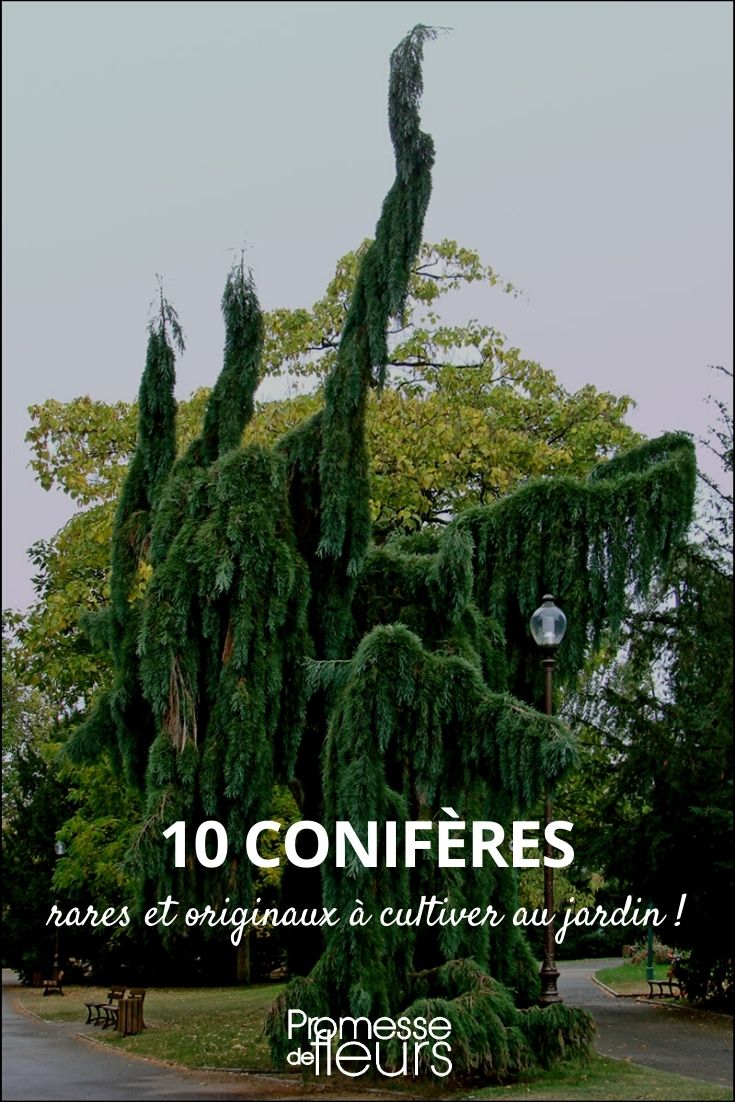
































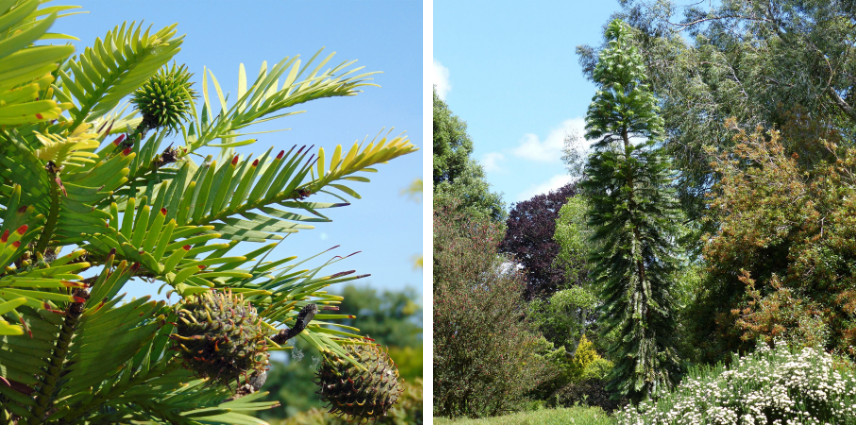
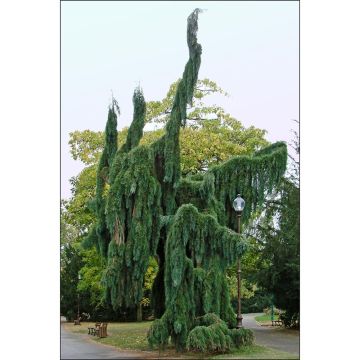
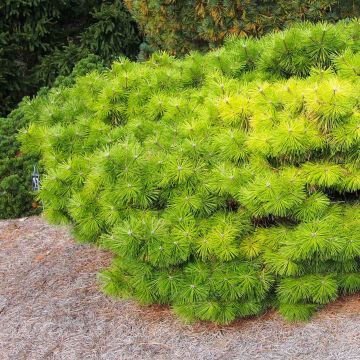
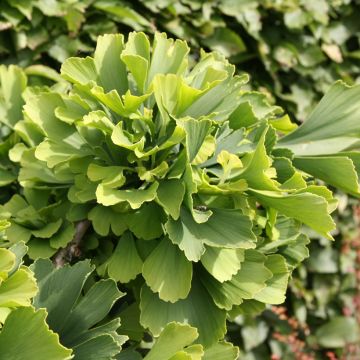
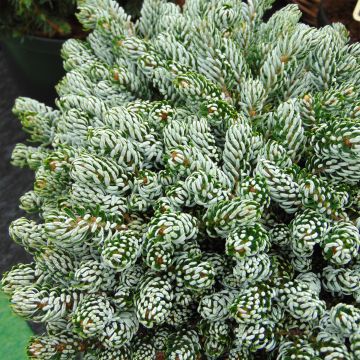

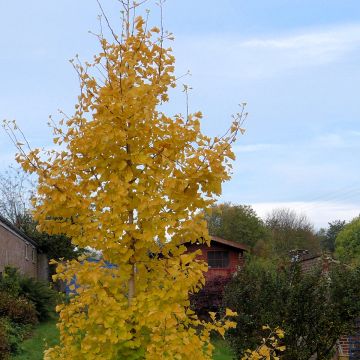
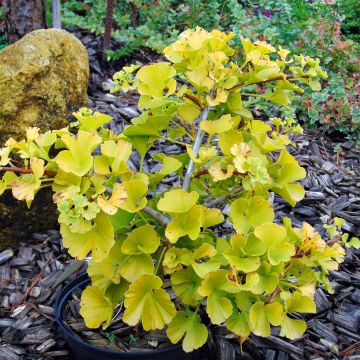
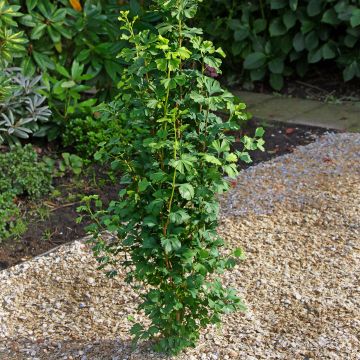
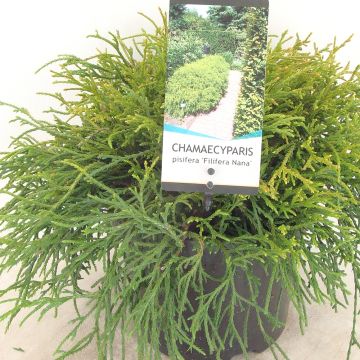
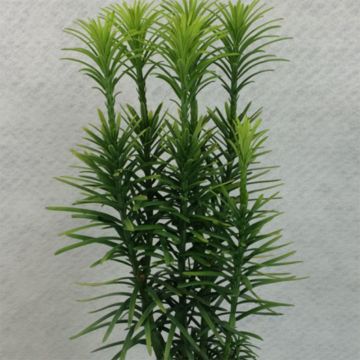
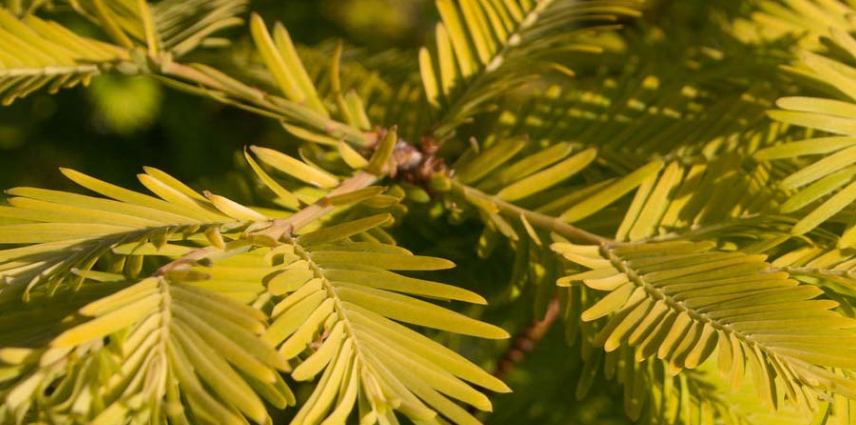
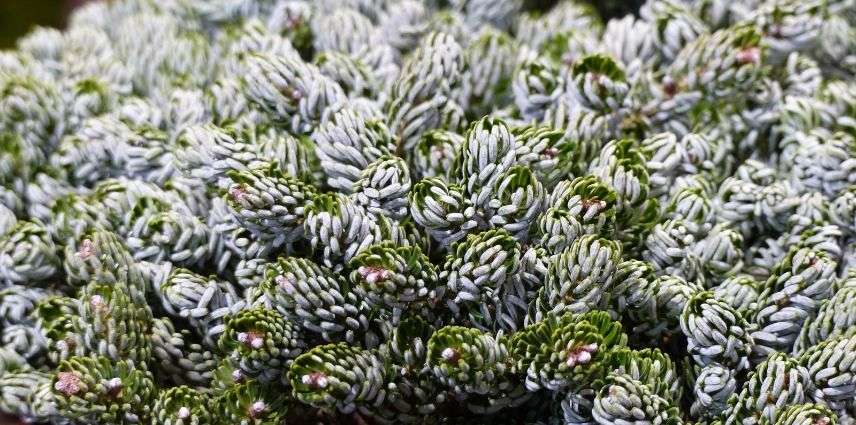
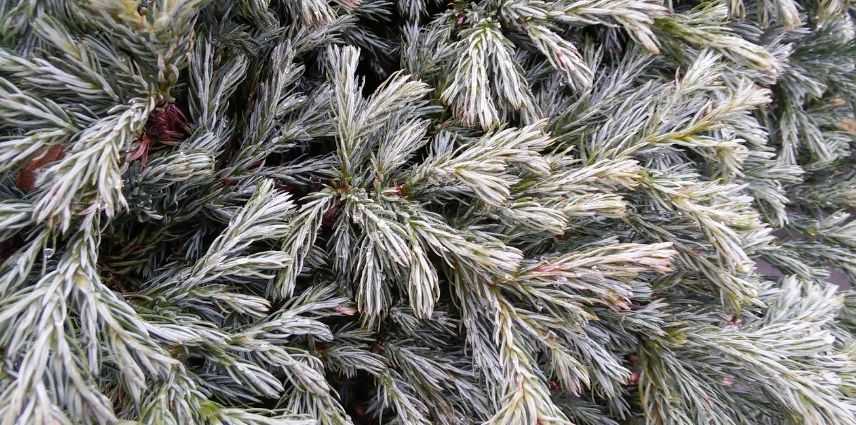
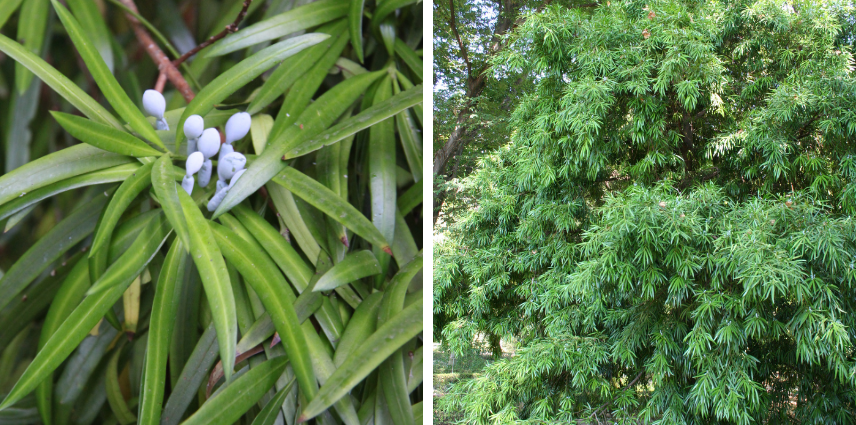
Comments